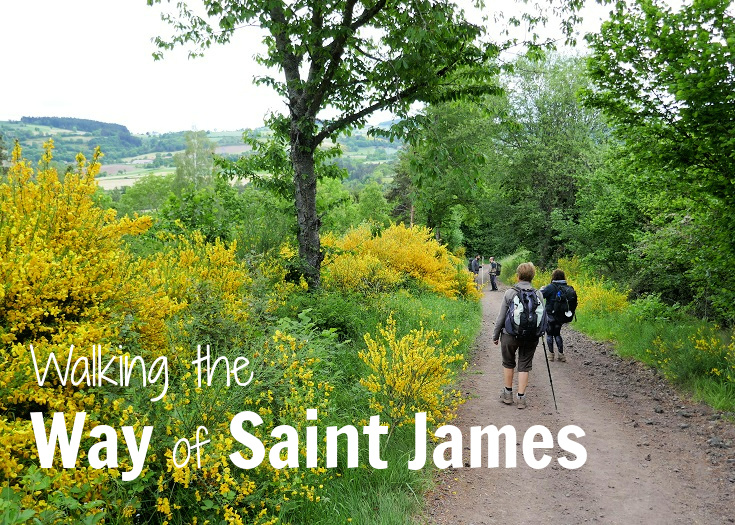
(Published February 2013, last updated April 2024)
The Way of Saint James is known by many names—the Chemin de Saint-Jacques de Compostelle, the Via Podiensis, the Pilgrims’ Trail or, more simply, the GR 65.
It is just one of many Grands Randonnées, or long-distance walking paths, which arrive in France from all corners of Europe, converging eventually in Saint-Jean-Pied-de-Port.
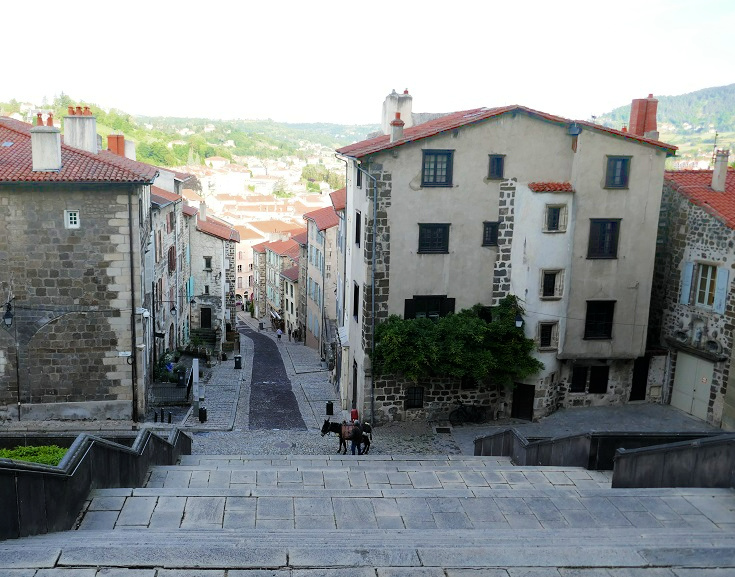
The Way of Saint James begins from the steps of Cathédrale Notre-Dame du Puy
Over time, four main routes became established and today there are over 4,000 kilometres (2,500 miles) of paths, known collectively as the Chemins de Saint-Jacques, which guide walkers from all over France to the southern town of Saint-Jean-Pied-de-Port.
The most popular of the four major routes through France is the Chemin de Saint-Jacques du-Puy which begins in the Haute-Loire region of France and winds its way over 740 kilometres (463 miles) south-west, passing through the Lozère, Lot, Tarn-et-Garonne, Gers and Landes regions, before reaching Saint-Jean-Pied-de-Port in the Pyrénées-Atlantiques.
The first recorded pilgrimage from Le Puy-en-Velay to Saint-Jean-Pied-de-Port was made by Bishop Gothescale in the tenth century. Since then, many thousands of pilgrims have followed in his footsteps.
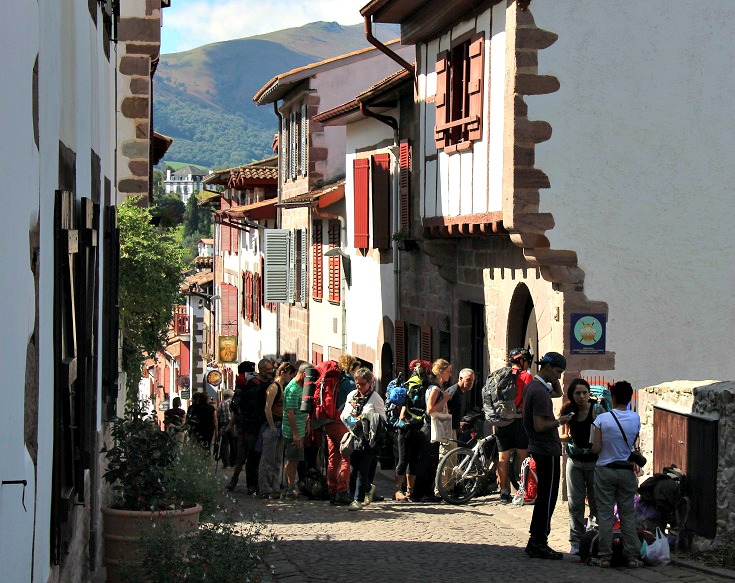
Walkers headed for Santiago in Spain queue outside Bureau des Pèlerins, Saint-Jean-Pied-de-Port
Perhaps the most famous, and most crowded, of all long-distance walks is the Spanish Camino which stretches 800 kilometres (500 miles) from Saint-Jean-Pied-de-Port to Santiago de Compostela in northern Spain.
Statistics vary greatly but between 100,000 and 200,000 walkers set out each year to complete all, or part, of this trail which, confusingly, is often referred to as the Camino Frances—a reference to its starting point in Saint-Jean-Pied-de-Port nestled in the foothills of the Pyrénéan mountains of southern France.

Legend has it (and this is the version that I like best) that after the death of Jesus, the twelve disciples cast lots to divide up the known world and determine where each of them would spread the gospels.
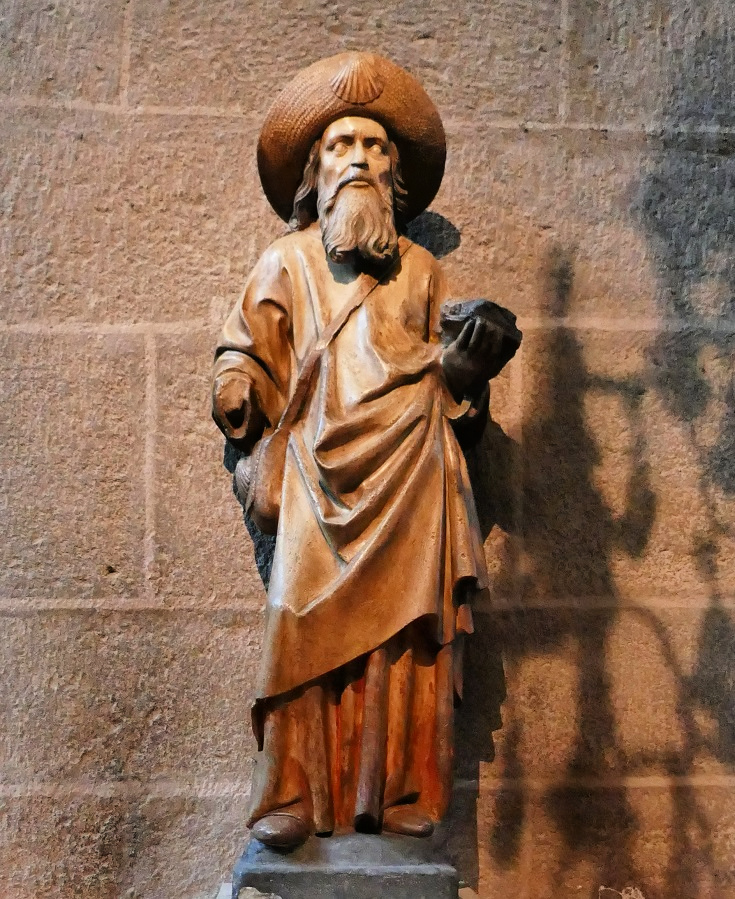
A statue of Saint-James in Cathédrale Notre-Dame du Puy
James travelled to Iberia (now known as Portugal and Spain) but, disappointed by what he perceived as a lack of success, returned to Jerusalem some years later, where he was promptly beheaded on the orders of King Herod.
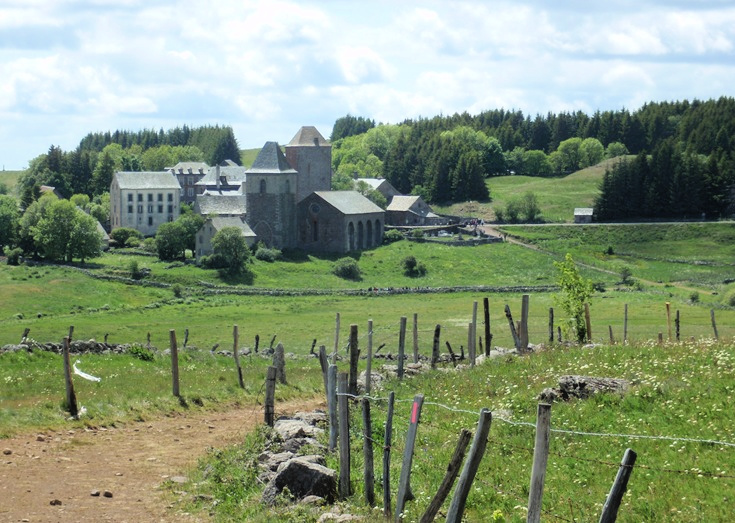
Approaching Aubrac (Chemin de Saint-Jacques du-Puy – Stage 2 : Aumont-Aubrac to Figeac)
Devastated by his death, two of James’ followers placed his body in a boat, which was guided by angels back towards Iberia. The boat washed ashore near Fisterra in northern Spain, where local villagers buried his body in a nearby forest.
Eight hundred years later, the body was discovered by a hermit and declared by the Bishop of Iberia to be the remains of Saint James. A small church was erected to mark the spot.
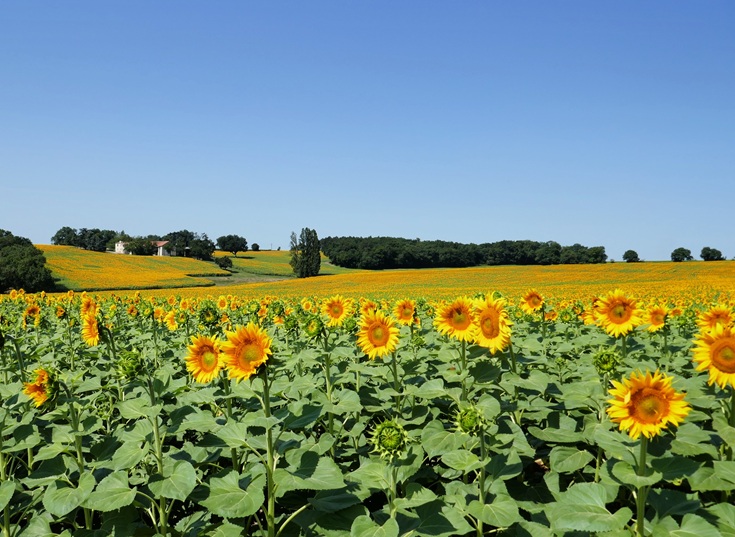
Fields of sunflowers between Larressingle and Montréal-du-Gers (Chemin de Saint-Jacques du-Puy – Stage 4: Cahors to Eauze)
And so, the first pilgrimages began.
For the devout people of France and northern Europe, a pilgrimage to northern Spain was much more manageable than a pilgrimage to Jerusalem.
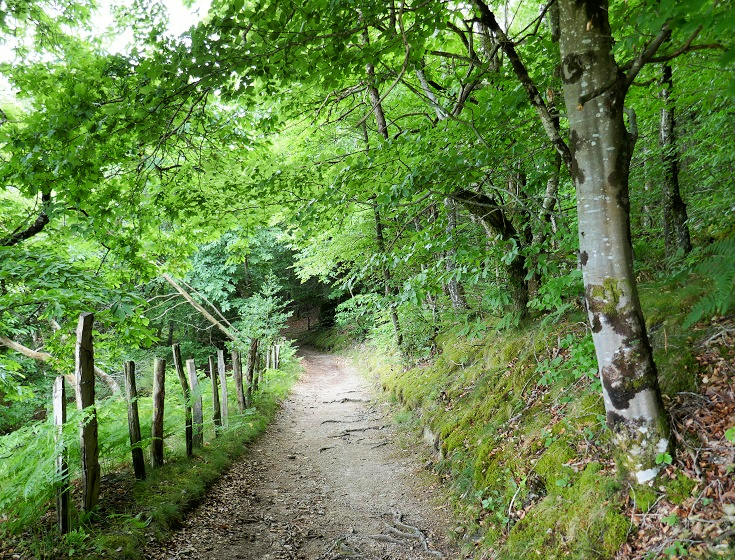
A secluded path through the forest between Estaing and Golinhac (Chemin de Saint-Jacques du-Puy – Stage 2: Aumont-Aubrac to Figeac)
For more than one thousand years, pilgrims gathered in the picturesque village of Saint-Jean-Pied-de-Port (now classified as one of France’s most beautiful).
From here they begin the journey across the top of Spain to where the relics of Saint James are now housed in the much grander cathedral in nearby Santiago de Compostela.
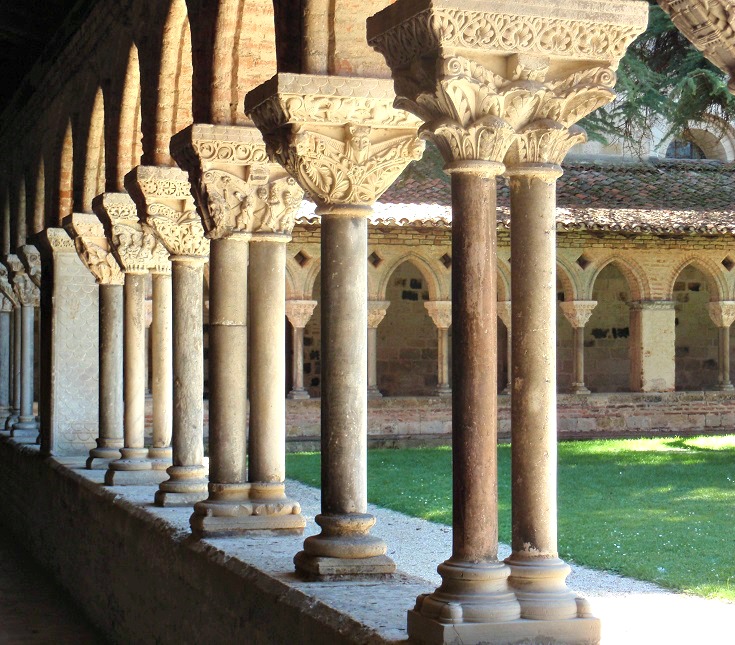
The capitols adorning the columns of the cloister in Moissac are believed to be the oldest in the world (Chemin de Saint-Jacques du-Puy – Stage 4: Cahors to Eauze)
If you intend to walk the entire length of this path (perhaps over many holidays), be sure to collect your crédencial, or passport, which identifies you as a pilgrim, before you leave Le Puy-en-Velay. You can have your crédencial stamped at each of your nightly stops. Not only will this serve as a lifelong reminder of your journey, it will give you priority access over other travellers if you wish to secure a bed in one of the many gîtes along the route. (In Spain, a crédencial is essential if you wish to stay in the pilgrims’ refugios.)

Approaching Gamarthe (Chemin de Saint-Jacques du-Puy – Stage 5: Eauze to Saint-Jean-Pied-de-Port)
Luckily for us modern-day walkers, a steady procession of pilgrims has resulted in a plentiful supply of accommodation and other infrastructure.
As you get closer to Santiago, competition for a cheap bed can be pretty stiff, but in France, you are unlikely to find yourself stranded or having to walk on to the next town.

Somewhere between Montbonnet and Saint-Privat-d’Allier (Chemin de Saint-Jacques du-Puy – Stage 1: Le Puy-en-Velay to Aumont-Aubrac)
Nowadays, people walk the Chemin de Saint-Jacques for a variety of reasons—sometimes for the physical challenge, sometimes as a walking meditation, often for religious reasons—and in a variety of ways—alone, in a guided group, with friends, in short stages or in one huge concentrated effort.
For me, it’s an opportunity to soak up some glorious scenery as I wander from one mouth-watering meal to the next.
No matter how, or why, you go, you’ll find friends and a camaraderie that overcomes language barriers and other differences.
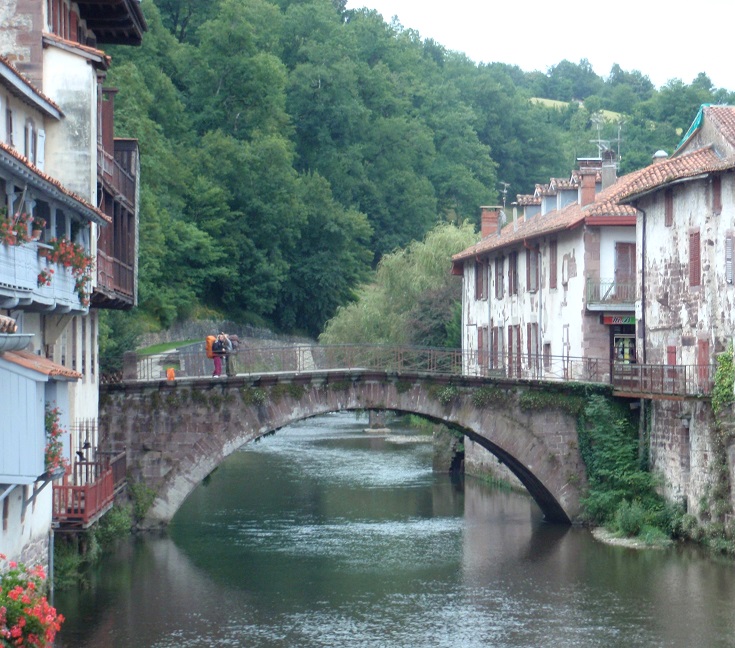
Pilgrims’ bridge in Saint-Jean-Pied-de-Port – the end of the Chemin de Saint-Jacques and the start of the Camino Frances
The four main routes in France are known by their starting points—
Chemin de Saint-Jacques du-Puy — 740 kilometres (463 miles)
Chemin de Saint-Jacques d’Arles — 805 kilometres (503 miles)
Chemin de Saint-Jacques de Paris — 940 kilometres (587 miles)
Chemin de Saint-Jacques de Vézelay — 1,090 kilometres (681 miles)
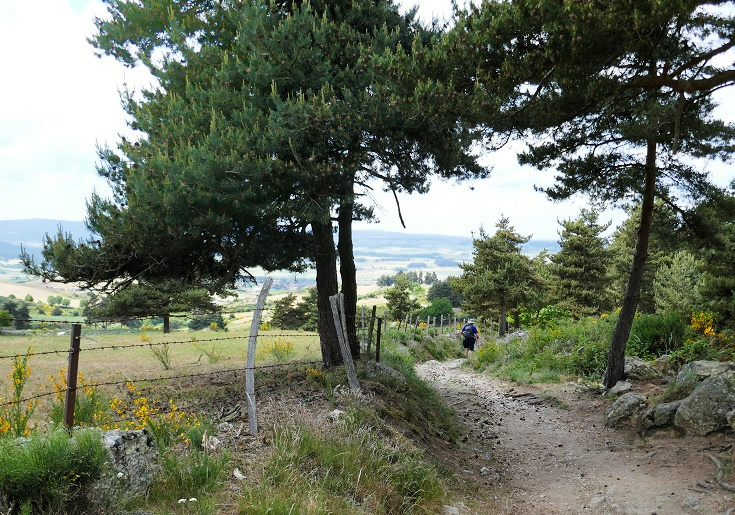
Approaching Saugues (Chemin de Saint-Jacques du-Puy – Stage 1: Le Puy-en-Velay to Aumont-Aubrac)
Learn more about walking along the Way of Saint James or Chemin de Saint-Jacques du-Puy—
Stage 1: Le Puy-en-Velay to Aumont-Aubrac
Stage 2: Aumont-Aubrac to Figeac
Stage 5: Eauze to Saint-Jean-Pied-de-Port
Some practical tips to make sure everything goes smoothly 🙂

